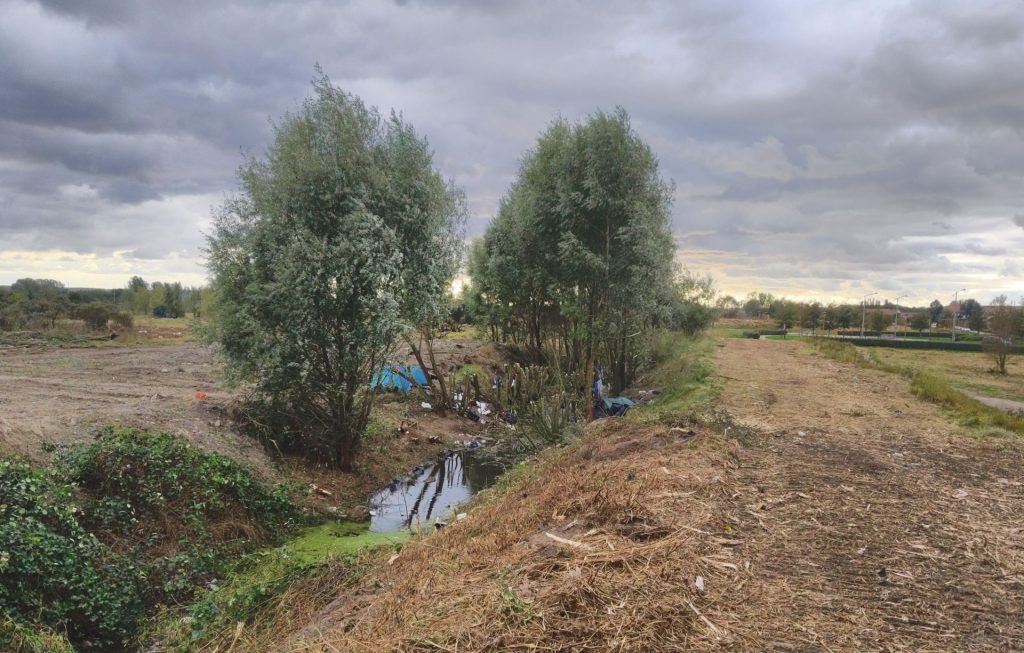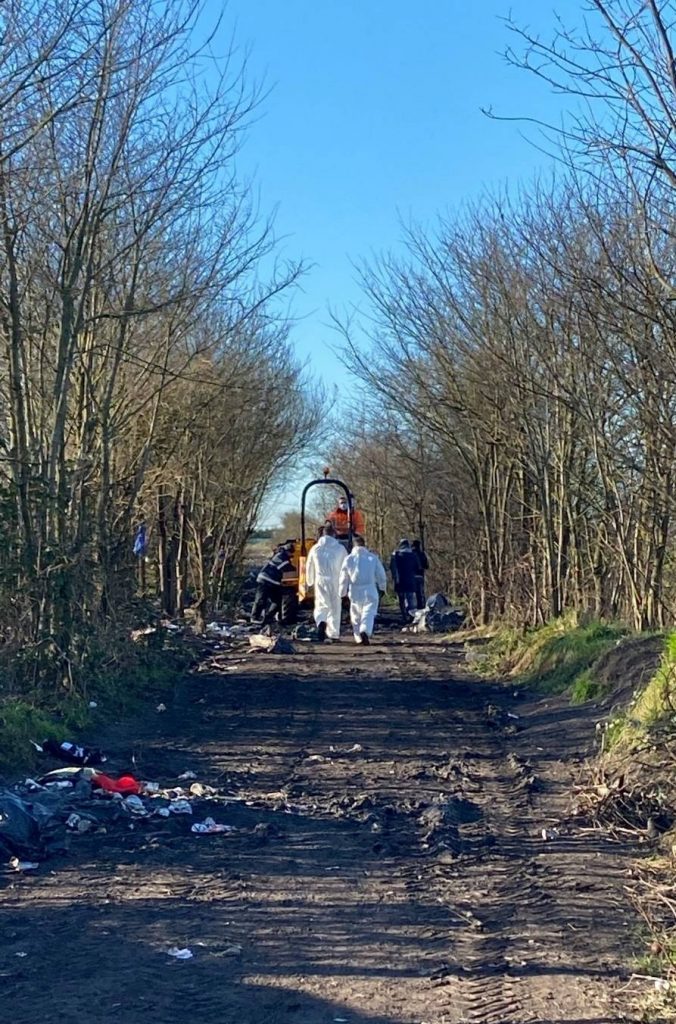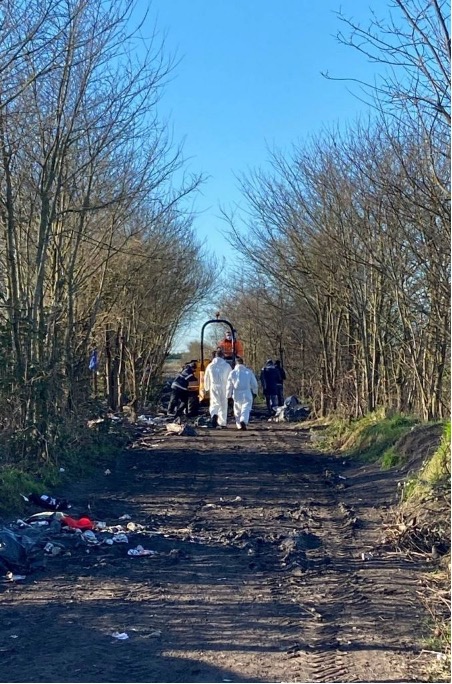SECP member Travis Van Isacker shares his research, adapted here from his doctoral thesis ‘Counter-mapping citizenship: bordering through domicide in Calais, France’ (2020). This year Travis will join Migration Mobilities Bristol as a Postdoctoral Researcher in the ‘Moving’ domain of the ESRC Centre for Sociodigital Futures. (for whom this post was originally comissioned).
The hostile environment has been shorthand for the United Kingdom’s border regime since it was coined in 2012 by the then-Home Secretary, Theresa May. Originally describing a socio-political environment within the UK designed to make life impossible for people unable to prove their immigration status, it has since been extended to the country’s extraterritorialised borderlands, Calais especially. As the concept travelled, its scope was expanded to include the urban and natural environments that also work to segregate migrants, drive them from the city and frustrate their journeys to Britain.
But what makes environments hostile? Calais is not naturally an especially inhospitable place, nor is it uniformly hostile to all human life. Rather, it has been made hostile for the racialised migrants who are neglected, injured and all too often killed there as a result of the border. That this state-mandated violence occurs to sustain an unequal global distribution of mobility rights and privileges for differentially racialised people means Calais’ hostile environment might best be understood as one of environmental racism.

Aftermath of destruction at Zone du Virval, across from Calais’ hospital, to prevent re-settlement by migrants, 22 October 2021 (image: author’s own)
Environmental racism is a concept typically associated with environmental rather than mobility injustice. Recently, however, it has been expanded in ways which help to unpack the racism, border violence and destruction of migrants’ living spaces in Calais. Willie Jamaal Wright (2018) argues that destroying the environments that Black communities inhabit cannot be understood separately from racist physical violence against Black people. For him ‘environmental racism includes the mutual devaluation of Black bodies and the[ir] spaces’ and is expressed through the ‘mutual malformation of people and environments’. Wright also points out that environments are not only destroyed as a route or corollary to the elimination of racialised people but become weaponised in the violent processes that do so. Thus, we can understand environmental racism as the destruction as well as instrumentalisation of environments to enact racist violence.
Classic studies of environmental racism focus on how communities of colour in the United States are overwhelmingly targeted for dumping waste and locating polluting industries. Calais has its own examples of this. Most notable is La Lande, a former landfill lying in the shadows of the Tioxide and Graftech chemical factories that became home to ‘The Jungle’ in 2015 with the eviction of all other camps and squats in the city. La Lande was a toxic and hazardous site, scattered with harmful waste caused by years of illegal fly-tipping, and that was a designated Seveso area ‘subject to an increased risk of chemical accident hazard’ (Statewatch, 2020). The air quality was particularly bad and held a sour tang. Frequently this was punctuated by the burning of lachrymogenic gas fired by police, illustrating that life in the Jungle not only had to survive ‘slow violence’, as residents’ bodies absorbed pollutants and endured neglect, but the open assault of state agents.

French riot police tear gas a group of Jungle residents demonstrating on the motorway, 20 August 2015 (image: Calais Migrant Solidarity)
Since the Jungle’s destruction in October 2016, the camps that migrants create in and around Calais have been mercilessly evicted and destroyed every day, even during blizzards. People’s warm clothes and sleeping bags are confiscated or intentionally soiled by police and city workers in the process. Their goal, in addition to preventing camps from becoming visible or attaining any material durability, is to keep migrants exposed to the elements so they decide themselves to leave Calais and abandon their attempts to reach the UK. Calais’ meteorological conditions – the rain, wind and cold – are thus put to work perpetuating deterrent border policies by inflicting misery and enforcing hardship upon those made to live rough in the city.
Criticism from NGOs led to these destructions being rhetorically rebranded ‘cleanings’. Racialised migrants, already constructed as dirty and contaminated through a racist imaginary, are scapegoated for polluting the environments in which they live, in turn justifying the relentless attacks on their homes in the name of environmental protection. Maria Hagan (2019) writes that these operations in fact do more damage as the slashed tents and spoiled belongings are ‘left on site or thrown into puddles or ponds nearby, not only polluting the environment but making it less liveable for the displaced’. The cleaning euphemism, while intending to downplay the violence of constantly evicting and destroying migrants’ homes, in fact betrays the racism behind these operations when it becomes clear that they are intended to clean the sites of people, not their waste.

A ‘cleaning’ operation close to Calais’ Fort Nieulay, 13 January 2022 (image: Paula Saura).
Despite daily evictions, migrants continue re-establishing camps in the same locations each day. Recently the city started using a new tactic to try and prevent re-settlement: the total destruction of the natural environments in which camps are located. Especially in areas too large to be fenced off (as already so many sites in Calais have been), excavators and bulldozers raze the land, cut down trees, and mulch the shrubbery following evictions. Destroying these environments denies migrants the modicum of shelter and privacy the scrub provided, rendering them hypervisible to police and fully exposed to the elements.
Reflecting other borderlands, the cold and violent seas of the English Channel have recently become both border agent and medium of conveyance for people’s irregular journeys. For decades its hazards presented a natural barrier to crossings, but the intense securitisation of lorry parks, the Eurotunnel terminal and ferry-port over recent years has left navigating this narrow but dangerous marine passage in overcrowded and unseaworthy vessels the only choice available to most. The increased exposure to hypothermia and death by drowning are not natural hazards of such journeys, but rather consequences of the racist border regime that prevents illegalised travellers from safely cruising on ferries or gliding through underwater tunnels like the rest of us.
These examples of environmental racism in Calais’ borderlands illustrate how the border harms the city’s environment while making it harmful to racialised migrants. However, the concept of environmental racism also draws attention to the social, cultural and political environment of racism through which border violence is generated and justified. Recognising racism as environmental – in the words of Christina Sharpe (2017) forming ‘the totality of our environments… the total climate’ – demands that our critiques extend beyond a focus on the hostility of borderlands to address the racist politics at their root if we are to abolish them and cultivate something new.
Travis Van Isacker is a Lecturer in Criminology at the University of Brighton. This year he will be joining Migration Mobilities Bristol as a Postdoctoral Researcher in the ‘Moving’ domain of the ESRC Centre for Sociodigital Futures. This post was adapted from elements of his doctoral thesis ‘Counter-mapping citizenship: bordering through domicide in Calais, France’ (2020).
This post was originally published by Migration Mobilities Bristol on 18th January 2022.



Leave a Reply